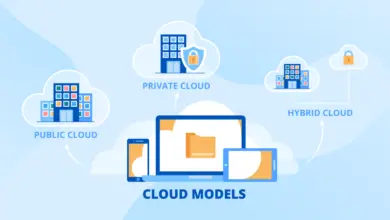Migrating to Cloud Storage: Tips for a Smooth Transition
Seamless Cloud Migration: A Guide to Smooth Transition

Migrating: In today’s rapidly evolving technological landscape, businesses are constantly seeking ways to improve efficiency, reduce costs, and enhance their overall operations. One of the key solutions that has emerged as a game-changer in this regard is migrating to cloud storage. The benefits of shifting to the cloud are well-documented, from increased flexibility to enhanced security and scalability. However, transitioning to cloud storage is not without its challenges, and successful migration requires careful planning, execution, and ongoing management. In this article, we will explore the essential tips for a smooth transition to cloud storage.

Assess Your Current Infrastructure
Before embarking on the journey to cloud storage, it’s essential to thoroughly assess your current infrastructure and understand your specific needs. This initial step involves evaluating your existing data storage solutions, including on-premises servers, databases, and file systems. Determine what data is mission-critical, what can be archived, and what can be safely migrated to the cloud.
Choose the Right Cloud Service Provider
Selecting the right cloud service provider is a pivotal decision. Popular options include Amazon Web Services (AWS), Microsoft Azure, and Google Cloud. Each provider offers a range of services and features, so it’s essential to match your specific requirements with the capabilities of your chosen provider. Additionally, consider factors such as pricing, data center locations, and security features.
Data Migration Strategy
Your data migration strategy plays a crucial role in the success of your transition to cloud storage. Determine whether you will opt for a lift-and-shift approach or a more gradual, phased migration. Each approach has its advantages and disadvantages. A lift-and-shift strategy involves moving your existing data to the cloud without significant modifications, while a phased approach may involve re-platforming or re-architecting certain applications for optimal cloud performance.
Ensure Data Security
Data security is paramount during the migration process. Your organization’s sensitive information must be protected during the transition. Implement robust encryption, access control, and identity management to safeguard your data. Most cloud service providers offer tools and features to enhance data security, but it’s your responsibility to configure them correctly.
Backup and Disaster Recovery
Before migrating your data, establish a comprehensive backup and disaster recovery plan. This plan ensures that your data is safe in case of unexpected events, such as system failures, data corruption, or security breaches. Regularly back up your data and test your disaster recovery procedures to guarantee quick recovery in case of an issue.
Cost Management
Cloud storage offers cost advantages, but without proper management, costs can escalate quickly. Keep an eye on your usage and consider implementing cost control measures, such as reserved instances, to optimize your spending. Utilize cloud cost monitoring tools to track your expenses and adjust your resources accordingly.
Performance Optimization
Cloud environments can be highly dynamic, which means performance optimization is an ongoing task. Monitor your applications’ performance and use cloud-native tools to identify and address bottlenecks. Auto-scaling features can help ensure that your applications run smoothly, even during peak usage.
Employee Training
A successful migration to cloud storage requires the support and understanding of your employees. Invest in training and education to ensure that your team can make the most of the new cloud environment. This includes teaching them how to use cloud management tools, as well as best practices for data storage and access.
Regular Maintenance and Updates
Maintaining your cloud environment is not a one-time effort. Regularly update and patch your systems to stay protected against security vulnerabilities. Take advantage of the latest features and improvements offered by your cloud service provider to enhance efficiency and security.
Seek Expert Assistance
Migrating to the cloud can be complex, and seeking expert assistance can make a significant difference. Consider working with experienced cloud consultants or managed service providers who can guide you through the process, offer best practices, and help you make informed decisions.
Conclusion
In conclusion, migrating to cloud storage is a strategic move that can bring numerous benefits to your organization. However, it’s a journey that requires careful planning, execution, and continuous management. By assessing your current infrastructure, selecting the right service provider, and following best practices for data migration, security, and performance, you can ensure a smooth transition to cloud storage. Regular maintenance, employee training, and expert guidance will further contribute to your success in the cloud. Embrace these tips, and you’ll be well on your way to reaping the rewards of cloud storage migration.




